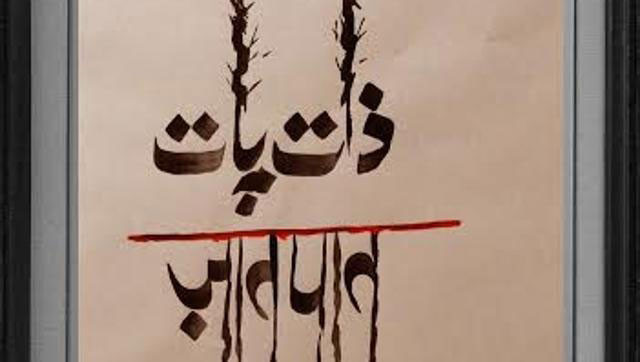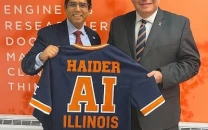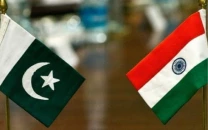'Language has no religion': Pakistani lawyer fuses Urdu, Hindi in calligraphy
Syed Mohammad Anwer has encased the unique form in a coffee table called ‘Samrup Rachna: Apni Boli (Hindi-Urdu)’

PHOTO: HINDUSTAN TIMES
Anwer recalls the summer of 1967 when he was a schoolboy wanting to play outdoors, but instead he learned Hindi indoors. While other children played outside in the scorching heat of Rawalpindi, his mother wanted him to remain indoors, so she taught him Hindi in the Devanagari script.
Islamic art: An eclectic mix of calligraphy
"I wasn’t too interested in studies, but I loved drawing. My mother scribbled some letters in my scrapbook and asked me to copy them a hundred times each with a ‘qalam’, a special pen with a broad slant nib meant to write Urdu letters in the Arabic script," Anwer recalls.
With the letters being unfamiliar to the boy, he asked her what language it was. His mother, Mather Yunus, who hailed from pre-Partition Faridabad, told him that it was Hindi.
“I was stunned and asked her in panic, ‘By writing the language of the Hindus, would I not become a Hindu?’” Anwer had questioned. To his surprise, his mother responded saying, "Language has no religion. It is we who make one language Muslim and another Hindu.”
"My mother never learned Hindi formally. She told me that Hindi and Urdu are one language and only the scripts are different. She went on to say that in the girls’ school at Faridabad, they were taught Urdu and Hindi in one period at school," Anwer recalled.

He further added that, "She had picked up the Devanagari script by just watching her Hindu classmates write. This discussion of half-an-hour or less with my mother was the first and perhaps the most profound lecture of linguistics I ever had.”
After learning the script, Anwer took to the canvas and produced unique fashion calligraphy some 40 years after his first lesson.
“My interest in calligraphy of the scripts of my own language - Apni Boli - initiated in childhood, led to the study of my own culture and society- ‘Apna Samaj’, which culminated in an art form after so many decades," Anwer said, adding that, "Scribbling and doodling is one of my pastimes. One day, I was sitting in my law firm, doodling in Devanagari script when I started writing a few words in the two scripts of ‘Apni Boli’ (Hindi-Urdu) in unison."
"Some of them emerged as fascinating patterns. At home, I borrowed crayons from Sheher Bano, my daughter, and again drew those words in different colours. Next, I decided to paint them. Then all the other ideas followed," he further said.
US county closes schools after uproar over Arabic calligraphy homework
The calligraphy has now been encased in a beautiful coffee table book called 'Samrup Rachna: Apni Boli' and comprises more than 60 works of calligraphy. Half of them are done in such a way that a picture of the word’s meaning is formed, and the book was brought out last month.
This was later gifted to poet Satyapal Sehgal, a professor of Hindi at Punjab University, who said about the piece, "Calligraphic art is very valuable in times when composite culture is a concept of the past. Samrup Rachna is a word coined by Anwer to convey the idea of similarity.”
This article originally appeared on The Hindustan Times.



















COMMENTS
Comments are moderated and generally will be posted if they are on-topic and not abusive.
For more information, please see our Comments FAQ